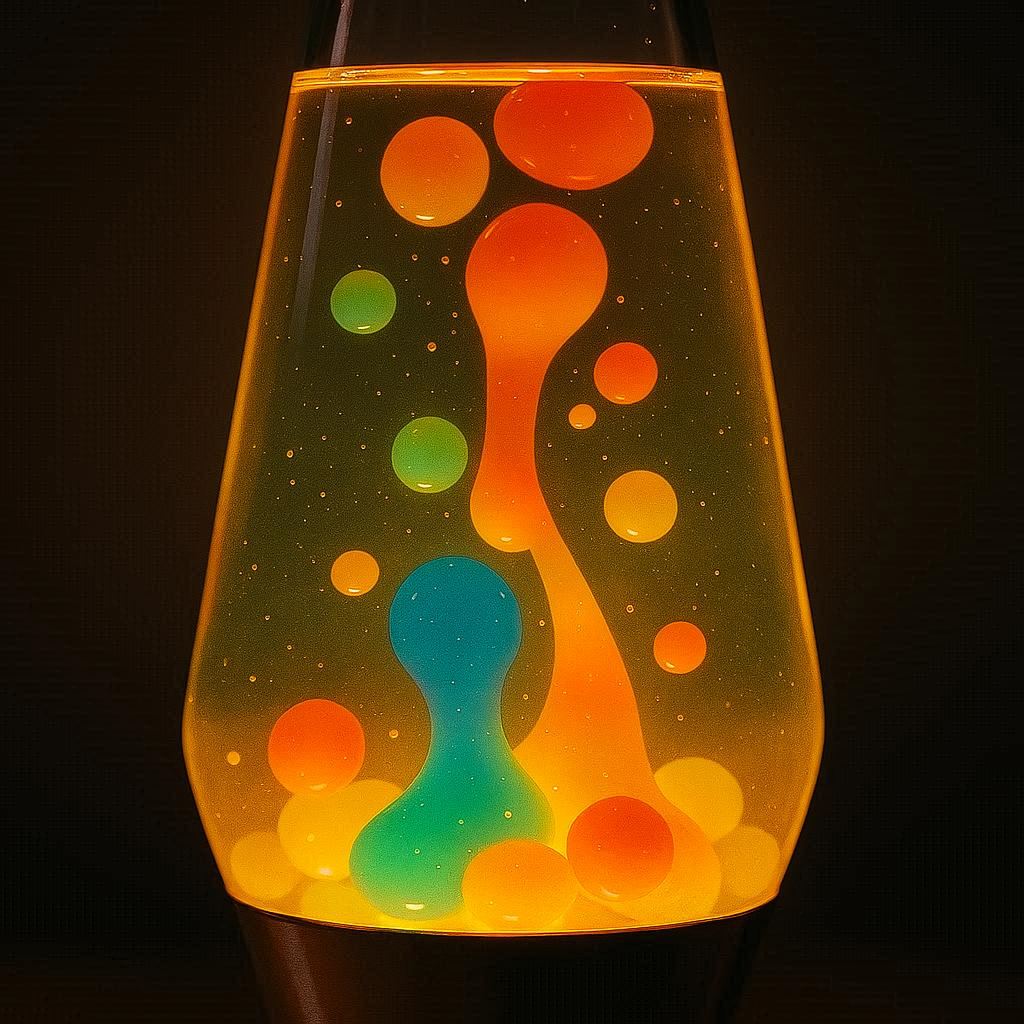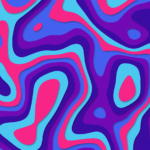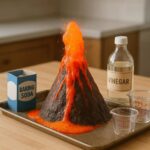Have you ever wondered what it would be like to walk on water? While that might not be possible in the literal sense, you can create a substance that mimics the sensation by making a DIY non-Newtonian fluid using common household ingredients. In this blog post, we’ll dive into the fascinating world of non-Newtonian fluids, explore their unique properties, and guide you through a simple DIY experiment to create your own ‘liquid cornstarch’ mixture. By the end of this post, you’ll not only understand the science behind these fascinating substances but also have the knowledge to create your own non-Newtonian fluid at home.
What Are Non-Newtonian Fluids?
Before we dive into the DIY aspect, let’s first understand what non-Newtonian fluids are. Named after Sir Isaac Newton, who first described the relationship between the viscosity (thickness) of a fluid and the force applied to it, non-Newtonian fluids defy this conventional behavior. Unlike water or air, which have a constant viscosity regardless of the force applied, non-Newtonian fluids change their viscosity in response to the force or pressure applied to them.
For example, cornstarch mixed with water creates a non-Newtonian fluid that behaves like a solid when subjected to sudden or firm pressure, but flows like a liquid when the pressure is gentle. This unique property makes it possible to walk on the surface of the fluid without sinking, creating the illusion of ‘walking on liquid.’
Ingredients and Materials Needed
To create your own non-Newtonian fluid at home, you’ll need just a few simple ingredients and tools. Here’s a list of what you’ll need:
- Cornstarch: This is the primary ingredient that gives the fluid its non-Newtonian properties.
- Water: This helps to create the right consistency for the fluid.
- Food Coloring (Optional): If you want to add some color to your fluid, you can use a few drops of food coloring.
- A Large Mixing Bowl: You’ll need a container to mix the cornstarch and water.
- A Spoon or Stirring Stick: To mix the ingredients until they form a smooth paste.
- A Plastic Tablecloth or Old Sheets (Optional): To protect your work surface from any spills or stains.
- A Pair of Gloves (Optional): To keep your hands clean while handling the fluid.
Step-by-Step Guide to Making a Non-Newtonian Fluid
Now that you have all the necessary ingredients and materials, let’s move on to the fun part – making the non-Newtonian fluid!
Step 1: Prepare Your Workspace
Before you start mixing, make sure your workspace is clean and protected. Cover your table with a plastic tablecloth or old sheets to prevent any spills from staining your surface. If you’re worried about getting your hands dirty, now’s a good time to put on your gloves.
Step 2: Measure the Ingredients
Start by measuring out the cornstarch. A good starting point is to use 2 cups of cornstarch. You can adjust this amount later if you find the consistency too thick or too thin.
Next, measure out the water. Begin with 1 cup of water and add more as needed to achieve the desired consistency. The key is to create a mixture that’s thick but not too dry. If the mixture is too dry, it won’t flow like a liquid; if it’s too wet, it won’t hold its shape when pressure is applied.
Step 3: Mix the Ingredients
Pour the cornstarch into the mixing bowl and gradually add the water while stirring continuously with a spoon or stirring stick. It’s important to stir slowly and carefully to avoid creating lumps. If lumps do form, don’t worry – they’ll disappear as you continue stirring.
Keep stirring until the mixture reaches a smooth, even consistency. You’ll know it’s ready when it no longer sticks to the sides of the bowl and has a uniform texture.
Step 4: Add Color (Optional)
If you want to add some color to your non-Newtonian fluid, now’s the time to do it. Add a few drops of food coloring to the mixture and stir until the color is evenly distributed. Be careful not to add too much, as this could make the mixture too runny.
Step 5: Test the Fluid
Now that your non-Newtonian fluid is ready, it’s time to test it out! Dip your hand into the mixture and observe how it behaves. When you apply gentle pressure, the fluid should flow like a liquid. But when you punch or apply firm pressure, it should harden and behave like a solid.
If the fluid is too runny, add a little more cornstarch and stir well. If it’s too thick, add a small amount of water and continue stirring until you reach the desired consistency.
Step 6: Experiment and Have Fun!
Now comes the fun part – experimenting with your homemade non-Newtonian fluid! Here are a few ideas to get you started:
- Walk on the Fluid: Pour the mixture into a large container or kiddie pool and try walking on it. Remember, the key is to apply firm, quick pressure. If you stand still for too long, you’ll sink into the fluid.
- Play with the Texture: Use your hands or objects to manipulate the fluid. Notice how it changes texture when subjected to different types of pressure.
- Create Art: Use the colored fluid to create unique art pieces. You can pour it into molds, spread it on paper, or even use it as a medium for painting.
- Conduct Science Experiments: Experiment with different ratios of cornstarch to water to see how it affects the fluid’s behavior. You can also try adding other ingredients, like glue or glycerin, to see how they change the properties of the fluid.
The Science Behind Non-Newtonian Fluids
Now that you’ve created your own non-Newtonian fluid, let’s delve into the science behind how it works. Non-Newtonian fluids exhibit a non-linear relationship between the shear stress (force applied) and shear rate (deformation). Unlike Newtonian fluids, whose viscosity remains constant regardless of the force applied, non-Newtonian fluids can either thicken or thin in response to changes in force.
In the case of cornstarch mixed with water, the fluid behaves like a solid when subjected to sudden or firm pressure. This is because the cornstarch particles lock together, creating a temporary solid structure. When the pressure is released, the particles relax, and the fluid flows like a liquid again.
Practical Applications of Non-Newtonian Fluids
Non-Newtonian fluids are not just fascinating to play with; they also have several practical applications across various industries. Here are a few examples:
- Cosmetics: Many personal care products, such as toothpaste, shampoo, and lotion, exhibit non-Newtonian properties. They are thick when left still but become runny when squeezed or poured.
- Food Industry: Cornstarch is a common thickening agent in many food products, including sauces, gravies, and desserts. Its non-Newtonian properties allow it to thicken when heated and thin when stirred.
- Pharmaceuticals: Some medications are formulated as non-Newtonian fluids to improve their flow properties and make them easier to administer.
- Engineering: Non-Newtonian fluids are used in the production of plastics, adhesives, and lubricants. They are also used in the oil and gas industry for drilling and extraction.
- Military and Defense: Researchers are exploring the use of non-Newtonian fluids in the development of body armor and protective gear. The fluid can absorb and dissipate impact, providing enhanced protection.
Tips for Making the Perfect Non-Newtonian Fluid
To ensure your DIY non-Newtonian fluid turns out perfectly, keep the following tips in mind:
- Use the Right Ratio: The ratio of cornstarch to water is crucial. Start with 2 cups of cornstarch and 1 cup of water, and adjust as needed. If the mixture is too thick, add a little more water. If it’s too runny, add a little more cornstarch.
- Stir Thoroughly: Make sure to stir the mixture thoroughly to avoid lumps. The mixture should be smooth and even in texture.
- Be Patient: Mixing the cornstarch and water can be a bit time-consuming, especially if you’re doing it by hand. Be patient and keep stirring until the mixture reaches the desired consistency.
- Experiment with Additives: Feel free to experiment with different additives, such as food coloring, glitter, or even sand, to create unique and interesting effects.
- Safety First: While the ingredients are non-toxic, it’s still important to handle them with care. Make sure to clean up any spills immediately and wash your hands thoroughly after handling the fluid.
Fun Variations to Try
If you’re looking to take your non-Newtonian fluid to the next level, here are a few fun variations to try:
- Glow-in-the-Dark Fluid: Add some glow-in-the-dark paint or glow powder to create a fluid that glows under UV light.
- Scented Fluid: Add a few drops of essential oils to give your fluid a pleasant scent.
- Thick and Thin: Experiment with different ratios of cornstarch to water to create fluids with varying viscosities.
- Layered Fluid: Create a layered effect by mixing the cornstarch with water and then adding a layer of oil on top. The oil and cornstarch will separate, creating a unique layered effect.
- Edible Fluid: If you’re working with kids, you can make an edible version of the fluid using cornstarch, water, and food coloring. Just make sure to use food-grade ingredients and avoid adding any harmful additives.
Safety Precautions
While making and playing with non-Newtonian fluids is generally safe, there are a few safety precautions to keep in mind:
- Non-Toxic Ingredients: Make sure to use non-toxic ingredients, especially if you’re working with children.
- Avoid Ingestion: While the ingredients are non-toxic, it’s still important to avoid ingesting the fluid.
- Cleanliness: Keep your workspace clean and wash your hands thoroughly after handling the fluid.
- Supervision: If you’re working with children, make sure to supervise them at all times.
Conclusion
Creating a DIY non-Newtonian fluid is a fun and educational project that can be enjoyed by people of all ages. Not only does it provide a hands-on way to learn about the unique properties of non-Newtonian fluids, but it also offers hours of entertainment as you experiment with different textures, colors, and applications. Whether you’re a science enthusiast, a parent looking for a fun project to do with your kids, or simply someone who loves to tinker and create, this project is sure to captivate and inspire.
So, what are you waiting for? Gather your ingredients, get mixing, and get ready to experience the wonder of walking on liquid cornstarch!
Final Thoughts
Non-Newtonian fluids are a fascinating example of how the properties of a substance can change in response to different stimuli. By understanding and experimenting with these fluids, we can gain a deeper appreciation for the complexities of the physical world and the amazing things that can be created with just a few simple ingredients.
If you’ve enjoyed this DIY project, we encourage you to share your experience with friends and family. Who knows – you might just inspire someone else to explore the fascinating world of non-Newtonian fluids!
Remember, the world of science is full of endless possibilities, and sometimes, the most amazing discoveries can be made right in your own kitchen. So, keep experimenting, keep learning, and most importantly, keep having fun!
This concludes our guide to making your own DIY non-Newtonian fluid. Happy experimenting, and remember to share your creations with the world!



